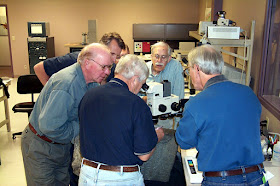I've been meaning to do this for a while now and with the Holidays upon us and Covid-19 giving everyone plenty of free time for reading, I wanted to make sure everyone interested in the latest Templar research was aware of our publications. The vetting of the Cremona Document and the Sinclair/Wemyss journals are on-going and if definitively proven authentic, they would be the most important "Templars in America" documents in history. Chapter 11 in my latest book, Cryptic Code of the Templars in America: Origins of the Hooked X Symbol, lays out the story of the Cremona Document in detail and sets the table for additional new documents and maps that have materialized since my book was published in September of 2019, and are currently being investigated. For those interested in personally signed copies of my own books or that of my wife, Janet, and her coauthor, Alan Butler's book, America: Nation of the Goddess: The Venus Families and the Founding of the United States, I would direct you to our website at: www.hookedx.com.
The latest in the Templar's in America series pulls everything together about the secret mission by the Templar's, they called "The Covenant," to found a sanctuary where they could live free from the tyranny of the monarchs of Europe and persecution of the Roman Catholic Church. That sanctuary is now called the United States of America (Published in 2019).
The most informative background information for the Cremona Document was written by the person who was intimately involved in the research from the beginning of the modern chapter of the story which began in 1968. That person is Donald Ruh. Don has written his own book that chronicles important details of the story that as the last man standing only he would know. It's filled with critical information and has hundreds of photographs.
Another incredible Templar story we are quietly vetting is the Sinclair/Wemyss journals. This story, along with the Cremona Document, will completely rewrite the history of America and put new and accurate light on the Templars' true history and ideology academics thought they knew. That vetting process is on-going as well and what is most exciting are the two completely independent documents, and the stories they tell, are beginning to dovetail providing confirming evidence that supports the authenticity of both sets of documents. This is truly exciting!
Diana Muir has published the first of twenty of the Sinclair/Wemyss journals that chronicles the first forty-one years of Earl Henry Sinclair's life including his first of three trips he took to the "Western lands." Diana has extensive annotations that add important additional context to the entries and leave you begging for more that will be forthcoming in the near future. The history revealed in the first book illuminates many important new facts about the fugitive Templars who escaped to Scotland and their relationship with the Scottish Clans who protected them. This is a must-read for anyone who is hungry for the true story of what happened to medieval Knights Templar after the put-down of the order in 1307. The important beginnings of the story that would result in the founding of the United States of America will truly amaze you.
Diana's book can be purchased here: https://www.lulu.com/shop/diana-j-muir/the-lost-templar-journals-of-prince-henry-sinclair-book-1-1353-1395/paperback/product-24004958.html?page=1&pageSize=4
Myself (far right), Diana Muir (stripped blue shirt), and my wife, Janet Wolter, (far left) meet with several Masonic brethren/researchers to discuss the Sinclair/Wemyss journals at the Scottish Rite Temple in Minneapolis, Minnesota, in March of 2017.
I'd be remiss if I didn't plug my own "Templar's in America" books, see below, and that of my wife, Janet Wolter and her co-author Alan Butler, all available at www.hookedx.com.














